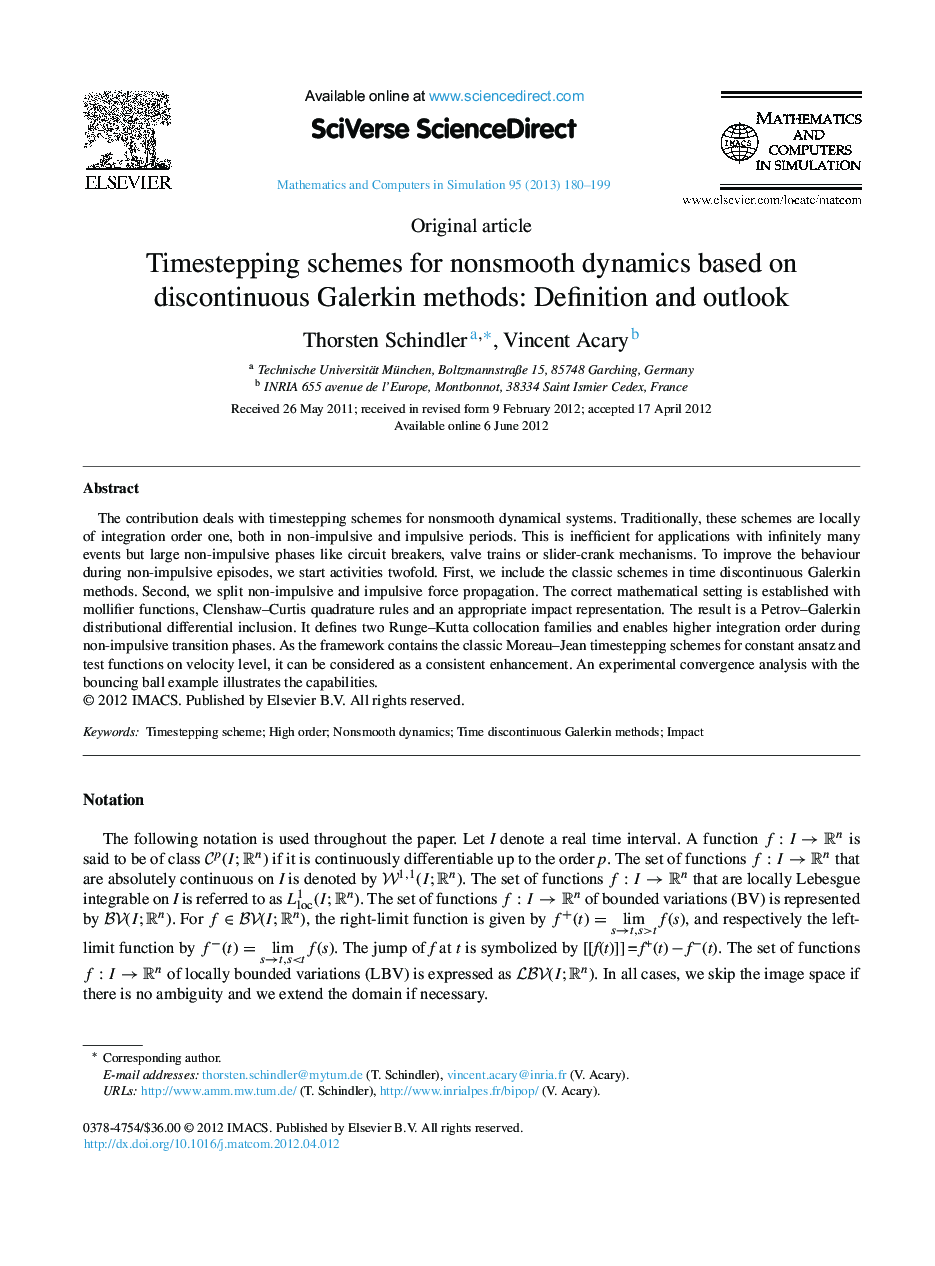| Article ID | Journal | Published Year | Pages | File Type |
|---|---|---|---|---|
| 1139134 | Mathematics and Computers in Simulation | 2014 | 20 Pages |
The contribution deals with timestepping schemes for nonsmooth dynamical systems. Traditionally, these schemes are locally of integration order one, both in non-impulsive and impulsive periods. This is inefficient for applications with infinitely many events but large non-impulsive phases like circuit breakers, valve trains or slider-crank mechanisms. To improve the behaviour during non-impulsive episodes, we start activities twofold. First, we include the classic schemes in time discontinuous Galerkin methods. Second, we split non-impulsive and impulsive force propagation. The correct mathematical setting is established with mollifier functions, Clenshaw–Curtis quadrature rules and an appropriate impact representation. The result is a Petrov–Galerkin distributional differential inclusion. It defines two Runge–Kutta collocation families and enables higher integration order during non-impulsive transition phases. As the framework contains the classic Moreau–Jean timestepping schemes for constant ansatz and test functions on velocity level, it can be considered as a consistent enhancement. An experimental convergence analysis with the bouncing ball example illustrates the capabilities.
